#TBT Throwback Thursday’s Feature is “Bee Research on Green Roofs in Asia, Europe, and North America”
By Michaela Hofmann and Susanne S. Renner – Originally Posted on Greenroofs.com on March 7, 2018
Publisher’s Note: We felt this this article was a perfect fit for our #TBT series to continue the discussion on greenroofs and biodiversity, especially with pollinators. About a week ago we reported on how the European Parliament Calls for Green Roof[s] Targets to Restore Urban Biodiversity.
Staff of the EU Chapter of the World Green Infrastructure Network (WGIN) shared that the European Parliament adopted the resolution “EU Biodiversity Strategy for 2030: Bringing nature back into our lives”, fully endorsing the EU Commission strategy to address the current biodiversity crisis in Europe and the rest of the world.
Enjoy!
A Personal View, by Michaela Hofmann
When you grow up on a farm, moving into a big city like Munich (with 1.5 million inhabitants) can feel like moving into a concrete desert. However, only at first glance.
Between building fronts and paved roads, nature has gained a foothold. But it was only when I began working on urban bees for my doctoral research that I became aware of a huge additional green space in modern cities, namely rooftops.
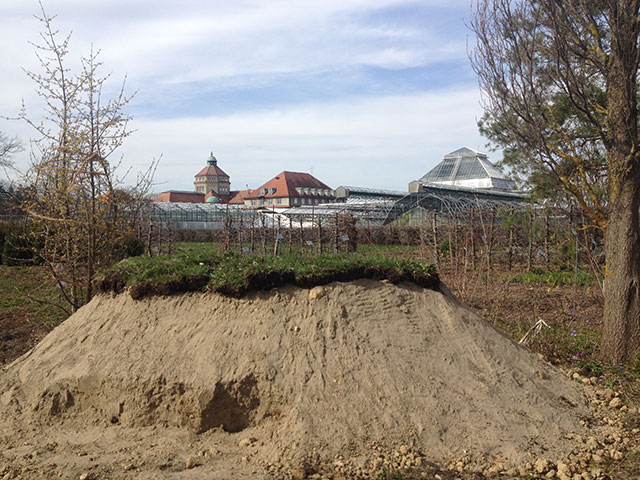
One of the nesting aids that the researchers were trying out on the ground. Such sand heaps (even much smaller ones) would be a huge help for bees. Photo by Michaela Hofmann.
It is now mandatory for many types of buildings to have green roofs, and the aesthetic and climate benefits of this type of new urban habitat are obvious and well-documented. But are there benefits for wild bees, the topic of my research?
The literature about effects of green roofs on biodiversity is surprisingly limited. My search for studies about wild bees on green roofs in Asia, Europe and North America revealed that so far, only 35 studies (worldwide) have been carried out, which have identified 236 species that use man-made green roofs as foraging or nesting ground. For comparison, there are 19,700 known bee species, and Germany alone has over 570 species.
The percentage of cavity-nesting bees on roofs is higher than that on nearby ground, while the percentage of pollen specialists is lower. Data are almost completely lacking on the reproductive success of bees on green roofs, the effect of roof age on bee diversity, and the genetic or demographic benefits of increased habitat connectivity.
I am hoping that my list of the bee species so far reported on green roofs may help in the selection and implementation of suitable soils, nesting aids, and plantings. One reason for why green roofs are so important for insects, certainly in Germany, is that they receive less fertilizer, fewer pesticides, and fewer herbicides than most other urban and agricultural land.
I think this aspect may make green roofs scientifically interesting spaces to study the relative effects of different factors that contribute to the loss of insect diversity in Central Europe.
Bee species recorded between 1992 and 2017 from green roofs in Asia, Europe, and North America, with key characteristics and open research questions
By Michaela Hofmann* and Susanne S. Renner*
Systematic Botany and Mycology, Faculty of Biology, University of Munich (LMU)
*Joint corresponding authors
Publisher’s Note: The following article was reviewed by and posted on Apidologie 49(1): 00-00. DOI: 10.1007/s13592-017-0555-x on December 19, 2017
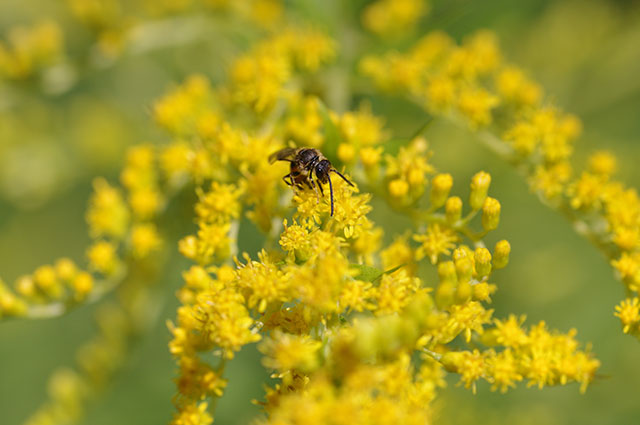
A male Lasioglossum calceatum discovered on green roofs. Photo by Michaela Hofmann.
Abstract
Green roofs, which have become mandatory on new flat-topped buildings in many cities, increase habitat connectivity for wildlife and have contributed to a boom in urban bee keeping. The ecological benefits or risks of green roofs for wild bees (bee species other than the domesticated honey bee, Apis mellifera), however, have not been comprehensively analyzed.
We therefore reviewed studies on insects caught on green roofs in Asia, Europe, and North America between 1992 and early 2017 and extracted information on wild bees. The resulting species list includes 236 Apidae identified in 35 studies, with thermophilic species probably overrepresented because roofs provide warm and dry habitats.
The percentage of cavity-nesting bees on roofs is higher than on nearby ground, while the percentage of pollen-specialists is lower. Data are almost completely lacking on the reproductive success of bees on green roofs, the effect of roof age on bee diversity, and the genetic or demographic benefits of increased habitat connectivity. Our list of the bee species so far reported on green roofs will help in the selection and implementation of suitable soils, nesting aids, and plantings.
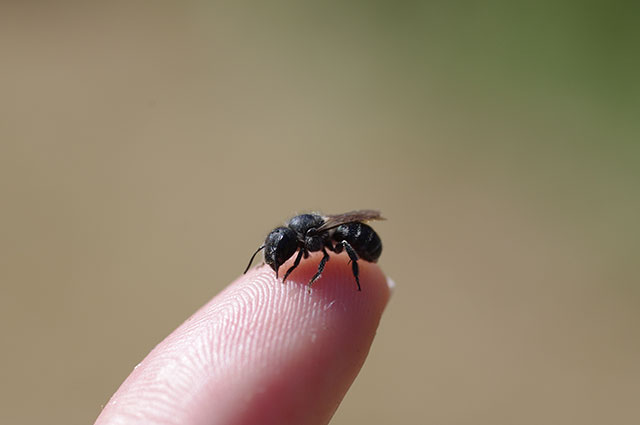
Osmia caerulescens recorded on green roofs. Photo by Michaela Hofmann.
INTRODUCTION
The past 20 years have seen a dramatic increase in research on green roofs (reviewed in Bowler et al. 2010; and Blank et al. 2013), which are now mandatory on flat-topped buildings in Switzerland and a few other European countries, and supported by incentives in the United States (Brenneisen 2006; Stutz 2010). Although there are different types of green roofs, one can generally distinguish between intensive and extensive roof greening.
Intensive green roofs usually have a soil layer of at least 15 cm and sometimes up to 60 cm or more (Mann 1994), while extensive green roofs have only a thin layer of soil (5 -15 cm), supporting mostly mosses, herbs, succulents, and grasses (Gedge and Kadas 2005). Roofs with shallow soil layers are a difficult growing environment for plants because of moisture stress, severe drought, and full exposure to sun and wind (Schneider and Riedmiller 1992; Dunnett and Kingsbury 2008). On the other hand, extensive roofs require minimal maintenance and can be self-sustaining.
Ecosystem services from green roofs include stormwater management (Getter and Rowe 2008; Berndtsson 2010), moderation of the urban heat island effect (Takebayashi and Moriyama 2007; Tabares-Velasco et al. 2012), lower building temperatures (Oberndorfer et al. 2007), and a role as urban wildlife habitat (for reviews see Fernandez-Canero and Gonzalez-Redondo 2010; Williams et al. 2014; Gonsalves 2016). An important aspect for the latter role is that green roofs are undisturbed by humans during most of the year, making them quiet habitats with low pesticide loads (Hui and Chan 2011). They also increase habitat connectivity for certain arthropods (Braaker et al. 2014).
Of the many arthropods living on green roofs, bees stand out because of their role as pollinators and because urban beekeepers tend to find bee keeping “restorative and empowering” (Moore and Cost 2013). While urban bee keeping has led to an increase of the density of honey bees in cities, the past 50 years have seen a decline in the abundance of wild bee species, attributed mostly to habitat loss and pesticides (Goulson et al. 2008), although data on change in bee abundances in urban spaces over time are scarce. Wild bees, most of which are solitary bees, are expected to benefit from the newly created habitat on green roofs because they may be able to forage both on the ground and on green roofs, and thermophilic species might also find nesting opportunities on green roofs.
Surprisingly, however, the effects of green roofs on the diversity and abundance of wild bees in cities have received little attention despite repeated calls for bee-targeted green roof research (Zurbuchen and Müller 2012; Witt 2016). We here provide the first list of bee species recorded from green roofs, summarize key ecological traits of these bees, and point to important open questions about the role of green roofs as habitat for solitary bees.
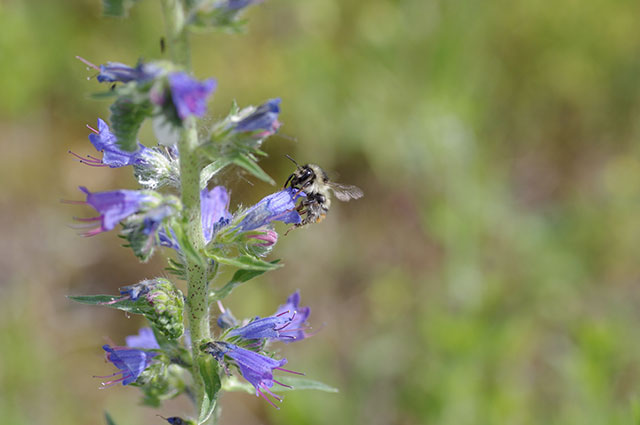
A female Bombus sylvarum, found on green roofs in France. Photo by Michaela Hofmann.
Online Supporting Materials
Download the 26-page Hofmann-Renner 2017 Bee Research on Green Roofs PDF of Online Supporting Materials, Tables S1 (Table S1: Overview of green roof (= GR) studies involving wild bee species assessment-), S2 (Table S2: Alphabetical list of species reported on green roofs), and References.
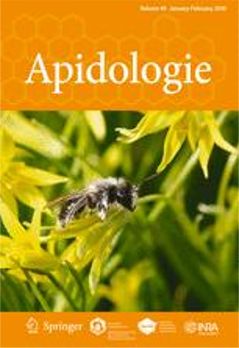
More Info
For more information and to read the entire study, see the Bee species recorded between 1992 and 2017 from green roofs in Asia, Europe, and North America, with key characteristics and open research questions now available at no cost on Springer Link (from Apidologie).
~ Michaela Hofmann and Susanne S. Renner, Systematic Botany and Mycology, Faculty of Biology, University of Munich (LMU)
Our research focuses on the systematics, phylogenetics, and evolution of plants and fungi, especially their adaptation to biotic and abiotic factors. Methods brought to bear on these questions range from light and electron microscopy to molecular cytogenetics, field work, and next generation sequencing of entire genomes to study them comparatively.
Publisher’s Note: Also read the research paper Bee species decrease and increase between the 1990s and 2018 in large urban protected sites by Michaela Hofmann and Susanne S. Renner from April 27, 2020 on Springer Link (from Journal of Inspect Conservation).
At the time of the original posting of this article (March 7, 2018), Michaela Hofmann was Professor of Systematic Biology, Faculty of Biology, University of Munich (LMU), 80638, Munich, Germany and Director of Munich’s Botanic Garden. Contact Michaela Hofmann, LMU Alumni Certificate Student Evolution, Ecology and Systematics at: michaela.hofmann@campus.lmu.de. As a follow-up, read the LMU Press Release of March 5, 2019 On farmland, latecomers lose out regarding how wild bees in Europe are in trouble.
Visit the webpage of Professor Dr. Susanne Renner, Faculty of Biology, University of Munich (LMU).
 Greenroofs.comConnecting the Planet + Living Architecture
Greenroofs.comConnecting the Planet + Living Architecture
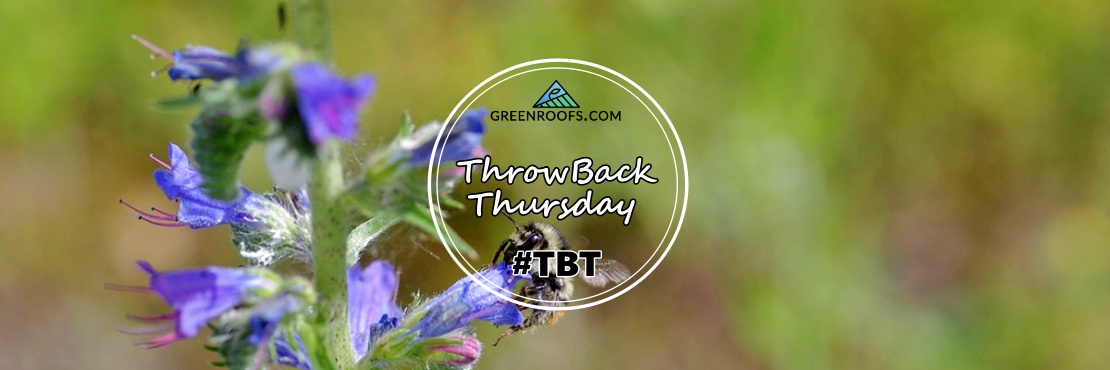


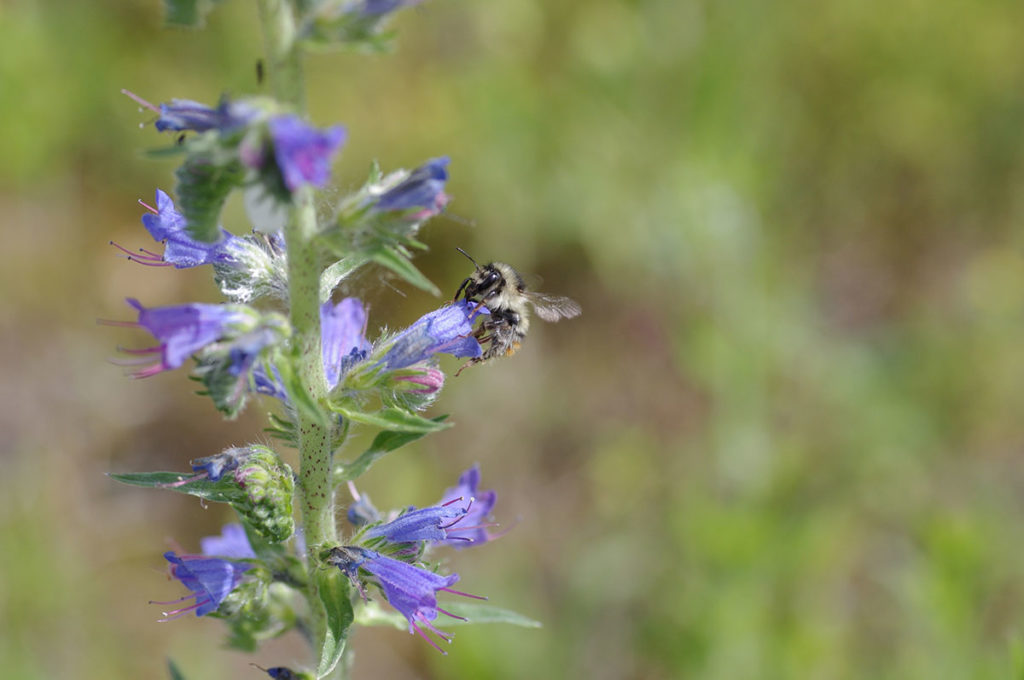






#TBT : Recherche apicole sur les toits verts en Asie, en Europe et en Amérique du Nord – lescouvreur.com
[…] Source […]